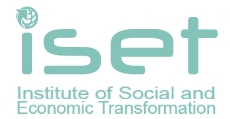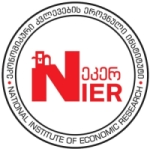The impact of high fee-low-subsidy and low fee-high-subsidy higher education funding models on higher education access in European Union countries
Abstract
Introduction. Higher education funding is relevant topic and widely analysed by scientist all other the world. Nowadays there is very big difference between higher education funding models across European Union countries – students have to pay very high fees for their studies in one countries, while in other countries – students have no obligations to pay for their studies at all, or have to pay very low tuition fees. All EU member states declare importance of HE for the future of economic, individual and society wellbeing. With respect to cost-sharing principle in higher education funding, higher education funding models can be divided into four models: Low-fee-High-subsidy; Low-fees-Low-subsidy; High-fees-High-subsidy and High-fee-Low subsidy.
Aim and tasks. The aim of this article is to perform comparative analysis of two extremely different higher education funding models, which are applied in European Union states – Low-fee-High-subsidy higher education funding model (LFHS model) and High-fee-Low-subsidy higher education funding model (HFLS model).
Results. The results of scientific research shows, that LFHS and HFLS models, which were analysed, have a different impact on access to higher education (i.e. gross enrolment rate (GER), GER male, GER female and HE graduation rate (HEGR) in EU countries.
Conclusions. Tuition fees (max., min., net, normative) have a statistically significant, but not only positive or negative impact on enrolment to HE and graduation of HE, as well as for women and men enrolment to HE (GER male, GER female) – it depends on funding model EU state applies. Max. need-based grants have positive impact only in LFHS model case as well as min. need-based grants. In addition, the results of research show, that there is gender inequality – women enrolment to HE exceed men enrolment at most in HFLS model. Men are more likely to study in countries with higher need-based grants (for instance, in LFHS model countries). Counties with higher GDP per capita are more likely to apply LFHS model, than countries with lower GDP per capita.
Keywords:
higher education, funding model, higher education access, tuition fees; grants, subsidyReferences
2. Bennetot Pruvot E., Estermann, T., Kupriyanova V. (2017) Public Funding Observatory Report 2017, EUA, Brussels.
3. Clancy P., Goastelle G. (2007) Exploring Access and Equity in Higher Education: Policy and Performance in a Comparative Perspective. Higher Education Quarterly, 61(2): 136– 154.
4. Council conclusions of 12 May 2009 on a strategic framework for European cooperation in education and training ('ET 2020'), OJ C 119, 28.5.2009.
5. Dearden L., Fitzsimons E. & Wyness G. (2011) The impact of tuition fees and support on university participation in the UK.
6. Eurydice (2018) National student fee and support systems in European higher education – 2018/19. Eurydice facts and figures. Luxembourg: Publications Office of the European Union. doi: 10.2797/233986.
7. Eurydice (2017) National student fee and support systems in European higher education – 2017/18. Eurydice facts and figures. Luxembourg: Publications Office of the European Union. doi: 10.2797/274915.
8. Eurydice (2016) National student fee and support systems in European higher education – 2016/17. Eurydice facts and figures. Luxembourg: Publications Office of the European Union. doi: 10.2797/735546.
9. Eurydice (2015) National student fee and support systems in European higher education – 2015/16. Eurydice facts and figures. Luxembourg: Publications Office of the European Union. doi: 10.2797/698301.
10. Eurydice (2014) National student fee and support systems in European higher education – 2014/15. Eurydice facts and figures. Luxembourg: Publications Office of the European Union.
11. Falch & Oosterbeek (2011) Financing lifelong learning: Funding mechanisms in education and training. European Expert Network on Economics of Education (EENEE) Analytical Report No. 10 Prepared for the European Commission.
12. Garritzmann J.L. (2015) The Political Economy of Higher Education Tuition Fees and Subsidies. Retrieved form https://ecpr.eu/Filestore/PaperProposal/cd2dd7aa-a63b-4548-9fbd- 84854cb63c5e.pdf (26.03.2019).
13. Goksu A., Goksu G.G. (2015) A comparative analysis of higher education financing in different countries. Procedia Economics and Finance 26 (2015) 1152-1158. doi: 10.1016/S2212-5671(15)00945-4.
14. Geven K. (2015). How Did the Latest Increase in Fees in England Affect Student Enrolment and Inequality? In Curaj A. Matei L., Pricopie R., Salmi J. & Scott P. (Eds.). The European Higher Education Area Between Critical Reflections and Future Policies. Springer Cham Heidelberg, New York Dordrecht London.
15. Johnstone D.B. (2006) Financing Higher Education: Cost-sharing in International Perspective. Boston College Center for international higher education; and Rotterdam: Sense Publishers.
16. Kaiser F. & O’Heron H. (2005) Myths and methods on access and participation in higher education in international comparison. Center for Higher Education Policy Studies.
17. Kane T. (1995) Rising Public College Tuition and College Entry: How Well Do Public Subsidies Promote Access to College? National Bureau of Economic Research (NBER) Working Paper 5164.
18. Kučaidze N. (2020) “Evaluation of Higher Education Funding Models and Impact on Higher Education Access in the European Union States”. Doctor dissertation, Vilnius, Lithuania.
19. Hemelt S. & Marcotte D. (2008) Rising Tuition and Enrollment in Public Higher Education. Institute for the Study of Labor (IZA) Discussion Paper: 3827.
20. Hübner, M. (2009). Do tuition fees affect enrollment behavior? Evidence from a ‘natural experiment’ in Germany. CDSE Discussion Paper No. 69, University of Mannheim, pp.1-25.
21. OECD (2012) How are countries around the world supporting students in higher education? Education indicators in focus. Retrieved form http://www.oecd.org/education/skills-beyond-school/49729932.pdf (10.12.2019).
22. Orr D. (2015) A Comparative Study on Cost-Sharing in Higher Education—Using the Case Study Approach to Contribute to Evidence-Based Policy. In Curaj A. Matei L., Pricopie R., Salmi J. & Scott P. (Eds.). The European Higher Education Area Between Critical Reflections and Future Policies. Springer Cham Heidelberg, New York Dordrecht London.
23. Santiago P., Tremblay K., Basri E. & Arnal E. (2008a) Tertiary Education for the Knowledge Society. Volume 1. Governance, Funding, Quality. OECD. Retrieved form http://www.oecd.org/education/skills-beyond-school/41266690.pdf (15.12.2019).
24. St. John, E. P. (2006) Public policy and equal educational opportunity: school reforms, postsecondary encouragement, and state policies on postsecondary education. In Readings on equal education; vol. 21. New York: AMS Press, Inc.
25. Payne B., Charonis G.K., Haaristo H.S., Maurer M., Kaiser F., Siegrist R., McVitty D., Gruber A., Heerens N., Xhomaqi B., Nötzl T., Semjonov M., Primožič R. (2013) Compedium of financing of higher education. Final report of a project named Financing the Students' Future. Retrieved form https://www.esu-online.org/wp-content/uploads/2016/07/FinSt-online.pdf (12.03.2019).
26. Trow, M. (2006) Reflections on the transition from elite to mass to universal access: Forms and phases of higher education in modern societies since WWII. In Forest J.J.F. & Altbach P.G. (eds.), International Handbook of Higher Education, Dordrecht. The Netherlands, pp. 243-280.
27. UNESCO (2005) Global Education Digest 2005. Montreal: UNESCO Institute for Statistics.
28. UNESCO (2020) Glossary: gross enrolment ratio. Retrieved form http://uis.unesco.org/en/glossary-term/gross-enrolment-ratio (10.12.2020).
29. Yeshchenko, M., Koval, V., & Tsvirko, O. (2019). Economic policy priorities of the income regulation. Espacios, 40 (38), 11.
30. Yang L. (2011) World Education Finance and Higher Education Access:
Econometric Analyses of International Indicators and the Implications for China. University of Michigan.
If the article is accepted for publication in the journal «Economics. Ecology. Socium» the author must sign an agreementon transfer of copyright. The agreement is sent to the postal (original) or e-mail address (scanned copy) of the journal editions.






















